
Using a watch-and-wait strategy among a group of highly selected patients with rectal cancer who have undergone neoadjuvant chemoradiation did not appear to compromise outcomes.

Your AI-Trained Oncology Knowledge Connection!


Using a watch-and-wait strategy among a group of highly selected patients with rectal cancer who have undergone neoadjuvant chemoradiation did not appear to compromise outcomes.

Using PET scans during induction chemotherapy for esophageal cancer, researchers were able to assess patient response to treatment and adjust their therapy, leading to an improved rate of pathologic complete response prior to surgery.

This slide show includes some of the top highlights from the 2016 ASCO Genitourinary Cancers Symposium, including studies on hypofractionation in low-risk prostate cancer, cabozantinib in advanced RCC, and more.

In this interview we discuss predictive biomarkers and response to immune checkpoint inhibitors for urothelial tumors, which include tumors of the bladder, ureters, and the renal pelvis.

A study found that about half of advanced germ cell tumor patients with platinum-resistant or -refractory disease harbor potentially actionable mutations.

An Egyptian study found that bladder cancer patients who underwent radical cystectomy had better local recurrence-free survival with adjuvant radiotherapy and chemotherapy combined, compared with chemotherapy alone.

Results from the large STAMPEDE trial suggest that the combination of zoledronic acid and celecoxib along with standard of care could improve failure-free survival in prostate cancer patients starting hormone therapy whose disease has metastasized.

The combination of the novel histone deacetylase inhibitor entinostat and high-dose interleukin-2 yielded a promising response rate in patients with metastatic renal cell carcinoma.

A three-arm trial found that one hypofractionation radiotherapy regimen was non-inferior to conventional RT for intermediate-risk prostate cancer patients.

The anti-PD-L1 antibody atezolizumab showed significantly improved objective response rates compared to historic controls in a phase II study of patients with locally advanced or metastatic urothelial carcinoma previously treated with platinum-based therapy.

A hypofractionated radiotherapy regimen was found to be noninferior to conventional fractionation for low-risk prostate cancer patients in a new randomized phase III trial.

Progression-free survival in advanced renal cell carcinoma patients treated with cabozantinib was nearly doubled compared with those treated with everolimus, according to data from the METEOR trial.

Men who take aspirin regularly may have a lower risk of dying from prostate cancer, according to results of a large observational study.

Prostate cancer patients who have a more heterogeneous set of detectable circulating tumor cells are more likely to develop resistance to anti-androgen therapy, according to the results of a new study.

At this year’s ASCO GU Cancers Symposium, several high-impact and potentially practice-changing abstracts were presented during the prostate cancer session.
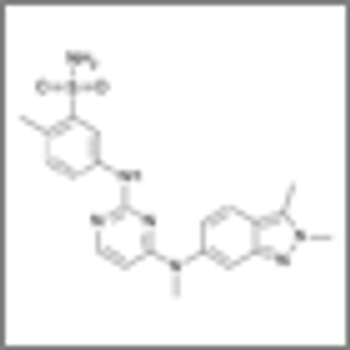
Phase II study results found that half of patients with relapsed or refractory urothelial carcinoma responded to treatment with pazopanib and paclitaxel.

In this interview we discuss the changing landscape of systemic therapies for the treatment of bladder cancer.

As part of our coverage of the ASCO GU Cancers Symposium, we discuss decision-making in the management of patients with early-stage prostate cancer.

The 4Kscore blood test has been shown to accurately detect the presence of high-grade prostate cancer, according to a study presented at ASCO GU.

Two clinical factors may predict PSA response to cabazitaxel in men with metastatic castration-resistant prostate cancer.
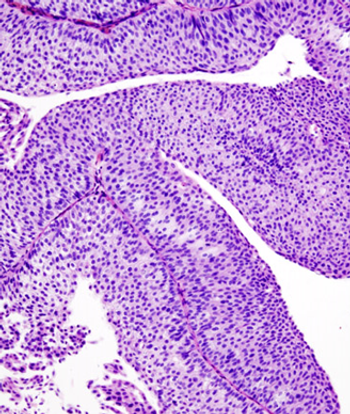
Patients with bladder cancer derived an overall survival benefit from the use of adjuvant chemotherapy compared with observation.
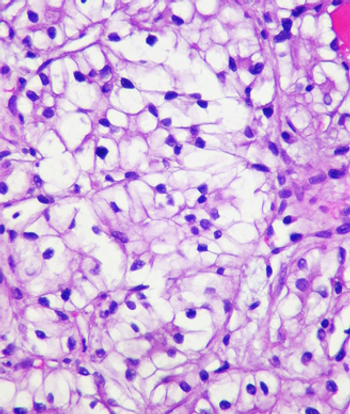
Metastatic renal cell carcinoma patients with an elevated neutrophil-to-lymphocyte ratio at baseline had inferior outcomes compared to those with a low ratio.

Intermediate-risk prostate cancer patients managed with surveillance had worse outcomes compared with low-risk prostate cancer patients managed with surveillance.

High-dose radiation therapy did not improve overall survival compared with the standard dose in stage II localized prostate cancer, but did show some benefits.
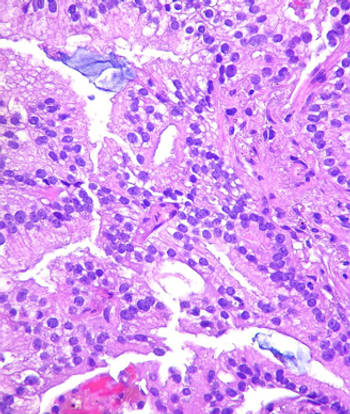
A large retrospective analysis suggests the number of patients diagnosed with intermediate- and high-risk prostate cancer has increased since 2011.
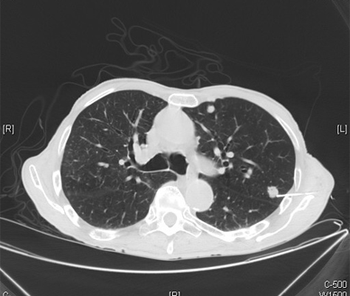
Levels of AR-V7 in metastatic castration-resistant prostate cancer patients could guide physicians to treat with either taxanes or enzalutamide/abiraterone.

Patients with a history of testicular cancer had a fivefold higher risk of developing aggressive prostate cancer when compared with those with no history of testicular cancer.

The TKI famitinib was associated with a significant PFS improvement in metastatic colorectal cancer patients, according to the results of a phase II study.
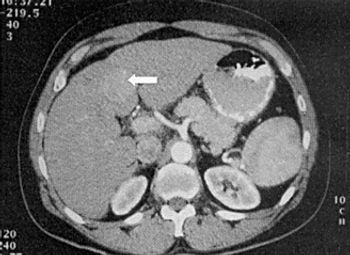
Hepatocellular carcinoma patients with baseline alpha-fetoprotein (AFP) levels greater than 400 ng/mL may derive greater benefit from second-line ramucirumab.
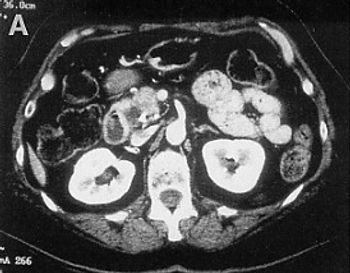
Combining MM-398 with 5-FU/leucovorin chemotherapy in metastatic pancreatic cancer patients resulted in improved survival compared with 5-FU/leucovorin alone.